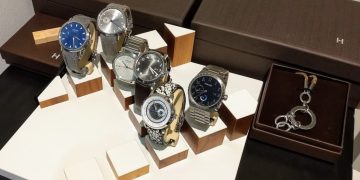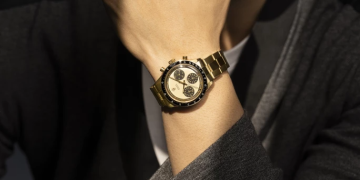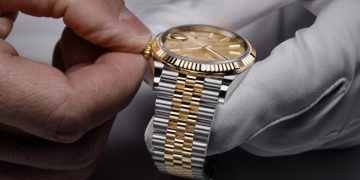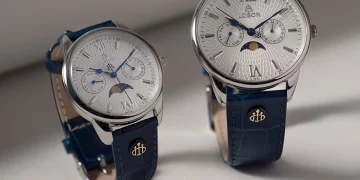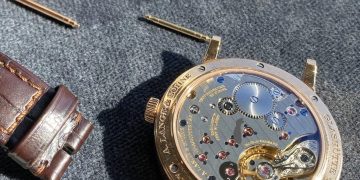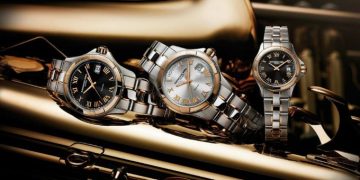In a world defined by scarcity, power dynamics, and a hierarchy that is both rigid and unforgiving, the concept of status takes on new meanings. While luxury watches are often associated with the affluent and the powerful outside the prison walls, they are equally coveted by those on the inside. Prisoners’ obsession with luxury watches has become a strange yet fascinating aspect of prison culture, with high-end timepieces taking on roles that transcend mere accessories. These watches serve as powerful status symbols, gateways to respect, and often even forms of currency in the underground market of incarcerated life. But why do luxury watches hold such appeal for those living behind bars? And how do they find their way into prisons, despite the obvious challenges?
This article delves into the illicit trade of luxury watches in prisons, exploring the psychological, social, and economic factors that make them so desirable in such a constrained environment. It also examines the underground market that drives their circulation within prison walls, and why a luxury watch, once a tool for tracking time, becomes a highly sought-after item that can change the balance of power behind bars.
The Psychology of Status in Prison: Why Watches Matter
In prison, where material possessions are few and the hierarchy is intensely rigid, status becomes a defining factor in an inmate’s life. The quest for respect, influence, and survival is paramount, and everything from clothing to food to body language plays a role in how one is perceived by others. In this high-stakes environment, a luxury watch emerges as more than just a functional item to tell time—it is a symbol of wealth, success, and power. Even though the basic needs of prisoners are met, the lack of freedom, privacy, and control over their environment makes status even more important. A luxury watch, with its unmistakable brand and expensive look, becomes a way for inmates to display their sense of identity, status, and sometimes, their ambition.
Prisoners, often stripped of their personal wealth and luxury, look for ways to reclaim their dignity. High-end watches, with their ties to success and wealth on the outside world, provide a small measure of this. It offers a sense of “normalcy” for those who may feel disconnected from society, reminding them of the world they once inhabited. It may also be used to create an aura of untouchability and sophistication, traits that are highly valued in the brutal, competitive social ecosystem of a prison.
The Role of Watches in Prison Hierarchy
Prisons are notorious for their well-defined social structure. There are power dynamics in every corner, and respect is earned through specific codes of behavior. Luxury items, particularly watches, play a significant role in these dynamics. Inmates often use luxury watches to demonstrate their place within the prison’s pecking order.
The individual wearing a luxury watch in prison is often seen as someone who is either able to buy their way into a more respected position or who has gained favor with influential inmates. As a result, these watches are frequently used as a form of “social currency.” Much like an inmate might trade cigarettes, food, or other goods to gain favor, a high-end watch can also be exchanged for protection, privileges, or alliances. For some, wearing a luxury watch can even signal that they are above the day-to-day struggles of prison life, able to maintain an air of success and invincibility in a world otherwise defined by hardship.
The value of a luxury watch extends far beyond its face value. For many prisoners, possessing such an item represents a statement of defiance and strength—traits that are essential for survival in prison. Inmates who manage to get their hands on such a timepiece are often seen as having power, wealth, or connections that make them a force to be reckoned with in the confines of prison.
How Do Luxury Watches Make Their Way into Prisons?
The question arises: how do luxury watches even make their way into a system where security measures are strict, and the transportation of high-end goods is heavily monitored? The answer lies in the well-established black market that operates within prisons. The underground prison economy is a thriving system that operates in parallel to the legal structure of the correctional facility. Inmates and their families often resort to smuggling goods in and out of prison through various methods, ranging from illegal visitors to corrupt staff members.
Luxury watches, along with other contraband items such as drugs, phones, and electronics, are smuggled into prison through a variety of channels. Prisoners often use intermediaries—friends, family members, or even unscrupulous prison guards—to get these high-end items past security. Once inside, the watches are distributed via a network of trusted individuals who act as brokers within the prison’s economy. These brokers, in turn, sell the watches to other inmates, often marking up the price significantly.
The process can be highly sophisticated, with watches being hidden in everyday items like books, food packages, or clothing. Prisoners who are involved in these transactions can make substantial profits from selling luxury watches, which are seen as one of the most valuable items available. The price of a luxury watch inside a prison can be many times higher than it would be on the outside, depending on the rarity of the watch and the influence of its owner.
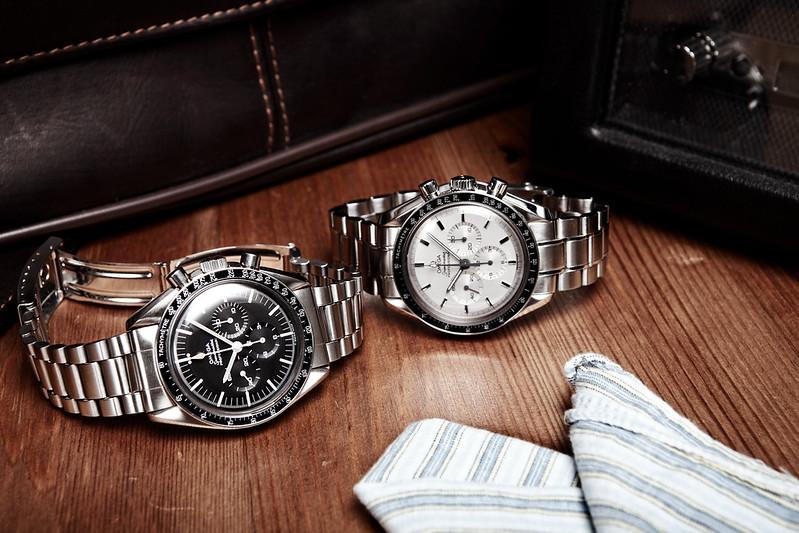
The Appeal of Luxury Watches: More Than Just Timepieces
For many prisoners, the appeal of luxury watches goes beyond their intrinsic value. These watches carry cultural significance. Brands such as Rolex, Patek Philippe, and Audemars Piguet have become synonymous with wealth, exclusivity, and sophistication in the outside world. Inside prison, these brands are perceived as symbols of all that inmates once had or aspired to have—success, power, and recognition.
Watches, particularly those with recognizable logos, also serve as signals of exclusivity. Certain models—like the Rolex Submariner or the Audemars Piguet Royal Oak—are immediately recognizable, and their presence on a prisoner’s wrist can act as a silent declaration of their status. Inmates who wear these watches, or who are seen with them in their possession, can elevate their perceived status among their peers. The watch becomes a shorthand for “I am someone important,” even in a world where most of the normal social cues are irrelevant.
Additionally, some prisoners see these timepieces as a representation of their resilience. Being able to hold on to a luxury item in the most restricted of environments is a symbol of survival and personal strength. For others, the watch can be viewed as an investment—something they can sell or barter with when the time is right.
The Underground Market of Luxury Watches in Prisons
The illicit trade of luxury watches in prison has created an underground market that operates independently from the official prison system. This market is fueled by a complex network of inmates, external suppliers, and often corrupt staff members. Much like any black market, the prices in this underground system can fluctuate depending on demand, supply, and the desirability of specific models. Watches that are in limited supply or that have strong cultural significance can command prices far above their market value.
Inmates who are able to acquire these watches often use them as tools to gain influence or leverage within the prison. Luxury watches in prison can act as a form of barter, with inmates offering them in exchange for protection, food, or other valuable resources. A watch might be traded between multiple inmates, each transaction adding layers to its cultural significance and value.
The trade in luxury watches can also serve as a method of creating or maintaining alliances between rival factions in prison. A watch, in this context, is not just an object—it is a statement of allegiance and trust. For those in higher positions of influence within the prison, a luxury watch might be worn to reinforce their authority and maintain their status within the community.
The Legal and Ethical Questions Surrounding Luxury Watches in Prison
The circulation of luxury watches in prisons raises significant ethical and legal concerns. On one hand, these items represent a form of survival for many prisoners, providing them with a sense of power and control in an environment that seeks to strip them of both. On the other hand, the illicit trade in luxury items often involves criminal activity, ranging from smuggling and bribery to corruption and exploitation.
The underground market for luxury watches in prison highlights the broader issue of inequality within the criminal justice system. Inmates who have access to financial resources—whether through their own wealth or through external contacts—can leverage these items to gain influence. In doing so, they reinforce the class divisions that already exist within the prison system, where wealth and status outside of prison can have a profound impact on one’s experience behind bars.
Conclusion: The Power of Luxury in Prison
The obsession with luxury watches in prison reveals the complex role that material possessions play in the social structure of incarcerated life. In a world where personal freedom is stripped away, status and power are often the only things that prisoners can control. Luxury watches, with their deep cultural significance and value, offer a way for inmates to maintain a sense of identity, assert their position in the social hierarchy, and navigate the brutal power dynamics of the prison system. The underground market for these watches only serves to underline their value—not just as timepieces, but as symbols of wealth, respect, and survival in a world defined by confinement and scarcity.



